Modern football places enormous tactical and technical demands on wingers. Once judged primarily on dribbling flair and goals, today’s wide players must contribute across every phase of the game — from pressing in the defensive third to providing penetration and creativity in the final third. For scouts and analysts, this means assessing wingers requires a multifaceted approach, balancing technical ability, tactical intelligence, and consistency of execution.
This article breaks down the five key competencies to focus on when scouting wingers, offering a framework that coaches, analysts, and scouts can use to evaluate performance and potential.
Pressing Ability
Defensive work is no longer optional for wide players. In modern systems, especially those built on high pressing or mid-block compactness, wingers are often the first line of pressure on the opposition fullback or wide center-back.
When evaluating pressing ability, scouts should look for:
- Pressing triggers recognition – Does the winger know when to jump (e.g., on a back pass, poor touch, or sideways ball)?
- Body orientation – Do they curve their runs to block passing lanes inside, or do they press in straight lines that are easy to bypass?
- Intensity and recovery runs – Is the pressing effort consistent, and do they track back quickly if the press is broken?
For example, in teams like Liverpool, wingers such as Mohamed Salah or Luis Díaz are not just attackers; they are integral to pressing traps, shutting down wide outlets and forcing turnovers in advanced areas.
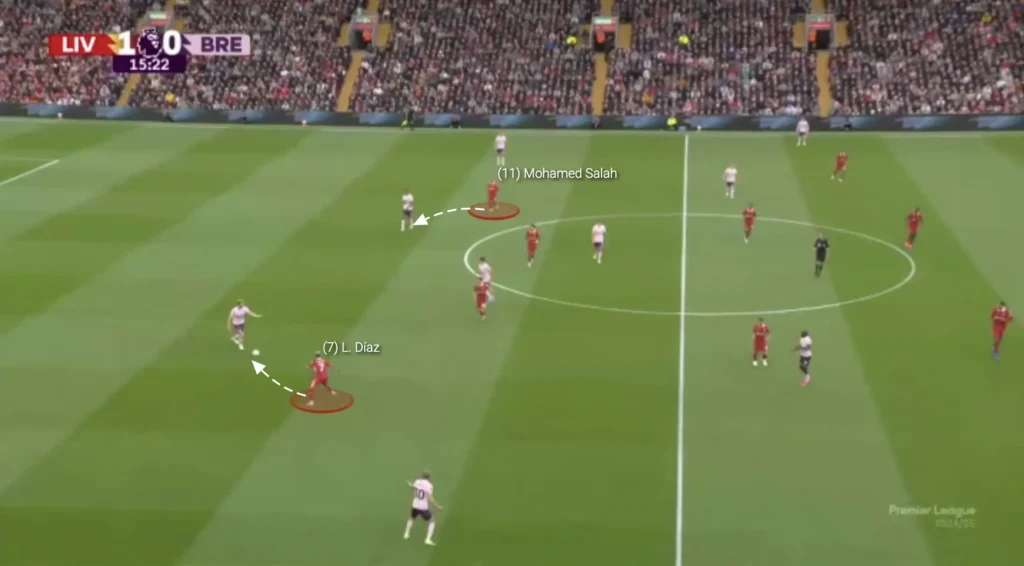
A winger who presses intelligently can create as many chances through defensive contribution as through direct attacking play.
Playing Between the Lines
The best wingers aren’t only touchline players; they also excel in the half-space, receiving between opposition midfield and defensive lines. This ability creates vertical progression options, especially against compact blocks.
Key indicators to evaluate:
- Scanning before receiving – Can the winger identify pressure and potential passing options before controlling the ball?
- First touch direction – Do they turn forward into space, or do they play backwards under pressure?
- Combinations – Are they comfortable linking with the striker, attacking midfielder, or overlapping fullback?
Wingers who master the half-space effectively add another midfielder to possession play. For example, Phil Foden often positions himself between lines, receiving diagonally and then accelerating play either with a forward dribble or a quick pass into the striker.
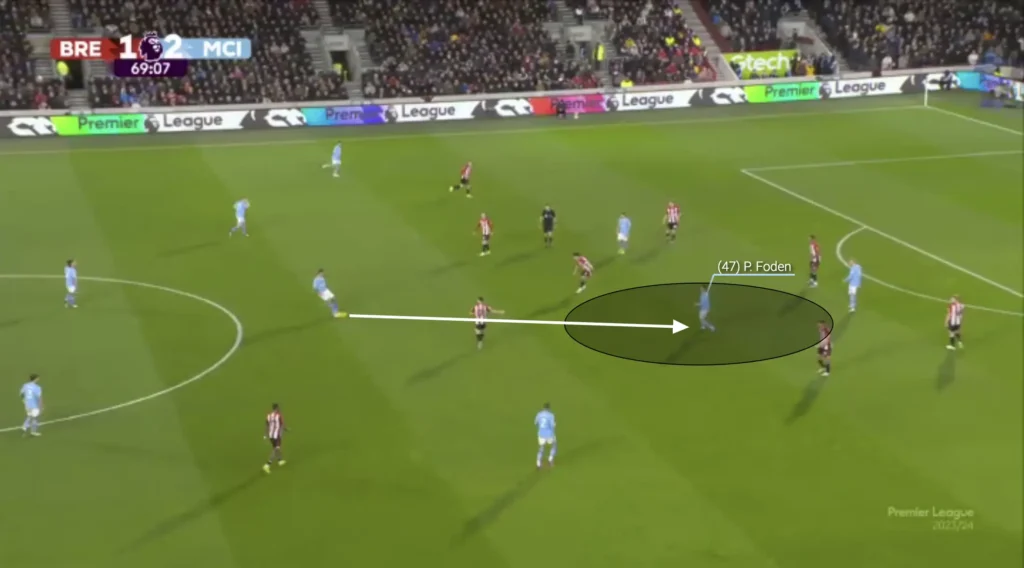
This competency is especially valuable against low-blocks, where patience and precision in these pockets are vital to breaking lines.
Dribbling Ability
Dribbling remains a core skill for wingers, but the context has evolved. It’s no longer just about beating defenders in isolated duels; it’s about carrying at the right tempo and advancing play in a way that supports the team’s structure.
Scouts should examine:
- 1v1 effectiveness – Can the winger consistently beat their direct marker?
- Carrying under pressure – Are they able to progress 10–20 meters to break the press or relieve pressure?
- Decision-making – Do they choose the right moments when to dribble and when not to?
Consider players like Nico Williams, whose dribbling is not only about flair but about progressing attacks with purpose, often drawing multiple defenders before releasing teammates into space. A winger who dribbles without end product is less valuable than one who consistently turns carries into chances or territory gained.
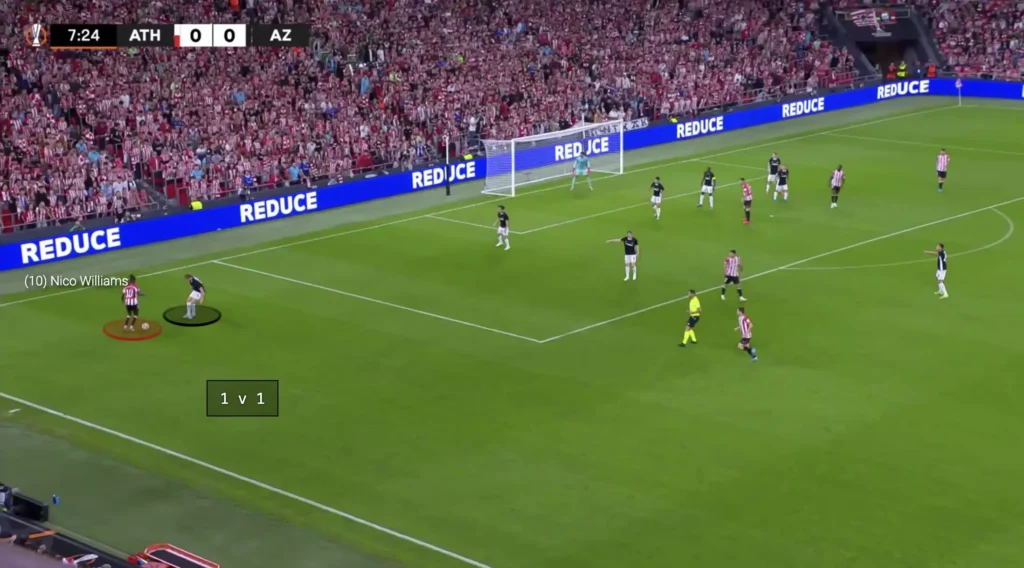
Runs in Behind
Wingers who can stretch defenses with runs in behind are essential for unlocking compact backlines and punishing high defensive lines. Verticality forces defenders into uncomfortable choices: stay higher and risk balls over the top, or drop deeper and concede midfield space.
When assessing this trait, focus on:
- Timing of runs – Do they move too early and get caught offside, or can they delay and accelerate into the gap?
- Variety of movement – Do they only run straight behind, or can they curve across center-backs or drift diagonally into channels?
- Relationship with playmakers – Do they coordinate runs with the holding midfielder, attacking midfielder, or striker?
For instance, Vinícius Júnior at Real Madrid thrives on darting into spaces behind the backline. His runs not only create direct scoring opportunities but also open space for midfielders by forcing defensive units to drop deeper.
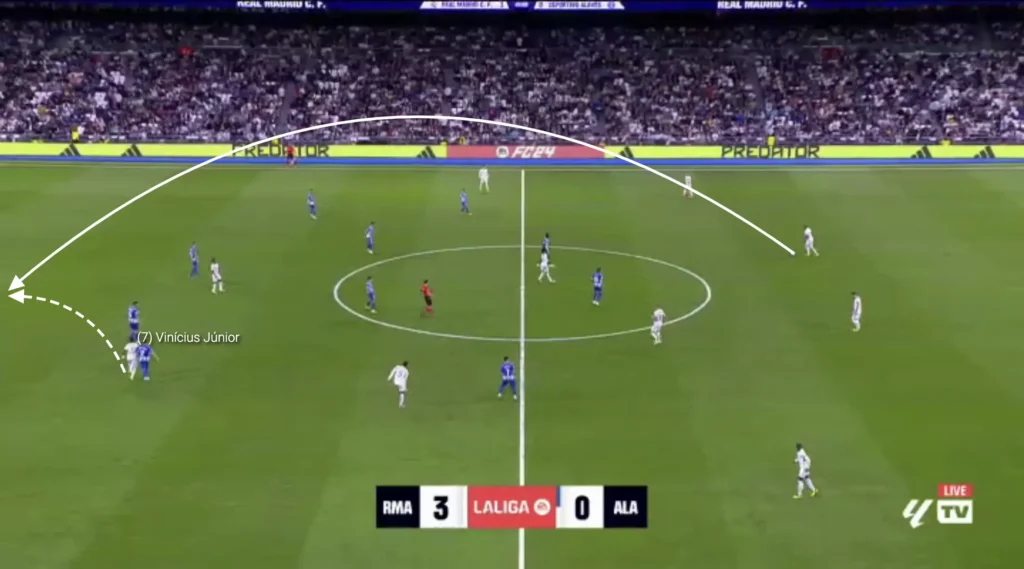
Chance Creation
Ultimately, a winger’s value is often judged on their ability to produce high-quality chances — whether through direct assists, pre-assists, or simply creating chaos in the box.
Scouts should focus on:
- Crossing variation – Can they deliver low cut-backs, lofted balls, and early crosses, or are they one-dimensional?
- Final-third decision-making – Do they know when to cross, when to combine, and when to recycle possession?
- Indirect contribution – Do their movements drag defenders out of position, creating space for teammates?
Lamine Yamal is an excellent example of wide chance creation: his ability to vary delivery and consistently pick out runners from the half-space or wide right makes him one of the most dangerous creators in world football.
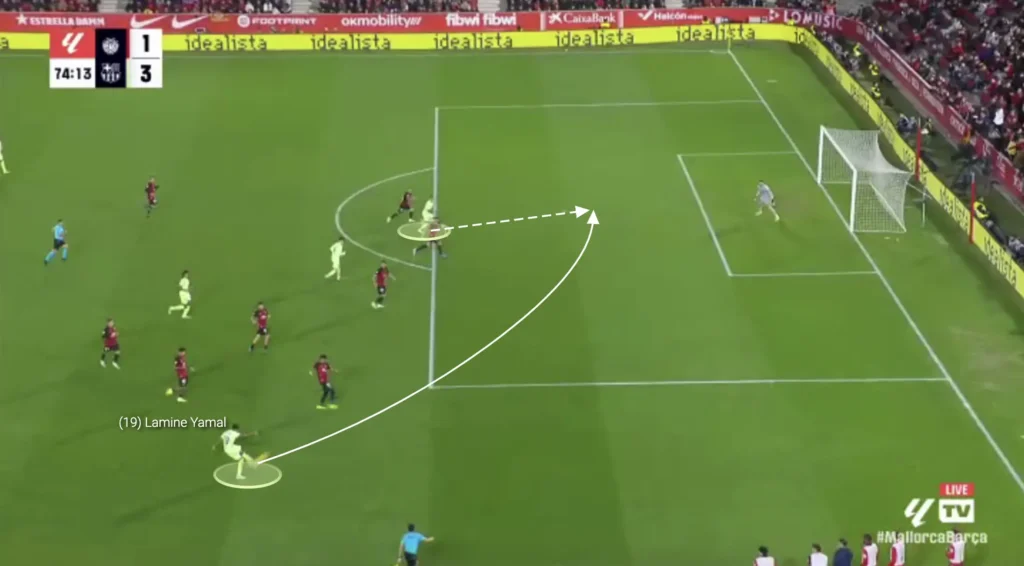
For wingers, true chance creation is not just about raw assist numbers — it’s about reliably generating opportunities, even against well-structured defenses.
Conclusion
Scouting a winger is about more than highlight reels of dribbles or goals. To analyze like a pro, scouts and analysts should break the role into five core competencies: pressing ability, playing between the lines, dribbling, runs in behind, and chance creation.
Each of these competencies connects to both team structure and tactical principles. A winger who presses effectively can shape defensive identity. One who plays between the lines can unlock compact blocks. A strong dribbler and runner in behind adds verticality, while consistent chance creation defines their end product.
By evaluating these areas in detail, scouts can separate flashy but inconsistent players from those who provide tactical reliability and long-term value. For coaches and analysts, this framework ensures that wingers are assessed not only for individual brilliance but also for how they fit into the team’s overall playing identity.
